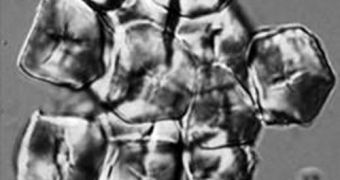It is commonly believed that the onset and development of agriculture took place around 10,000 years ago, as our forefathers learned how to harvest and domesticate plants, and put them at work to support growing communities. This ability allowed for the appearance of larger cities, which in turn made science evolve, by putting more minds in one place. But now, a new discovery shows that our ancestors were capable of harvesting grains even as far back as the Stone Age, Nature News reports.
That's not to say that they were taking care of crop fields, experts warn. It simply means that the hominids of the age were simply picking grains from wild plants, and eating them. The discovery that led to this conclusion was recently made in the Ngalue cave, which is located in the sparsely populated Niassa province of Mozambique. The formation was discovered in 2005, by Canadian archaeologist Julio Mercader, who is based at the University of Calgary in Alberta. He is also the author of a new study detailing the discovery, which appears in the latest issue of the top journal Science.
He and his team basically discovered stone tools, which still had traces of ground seeds from sorghum grass on them. This means that hominids had been grinding grains and baking them into bread for a lot longer than originally estimated. “Whether they were eating it or not, we cannot be sure, but I cannot see how sorghum gets into the cave unless humans bring it in,” the expert says. He underlines the fact that the oldest established proof of humans preparing grains into bread comes from a site in Israel, which is estimated to be about 23,000 years old.
Mercader adds that, if his finding is confirmed, then this date may be pushed back by an additional 80,000 years. “These data imply that early Homo sapiens from southern Africa consumed not just underground plant staples, but above-ground resources too,” he adds. Until now, experts believed that Stone Age people only consumed underground tubers and meat as their main diets. Not everyone agrees with the new interpretation, however.
Colorado State University exercise physiologist Loren Cordain, says, for example, that the evidence is too thin to support Mercader's argument that grains were used as food. “I don't think they've really built a strong case for the notion that cereal grains were exploited on a real basis and were part of the diet of our ancestors. It's fascinating and suggestive, but the logic doesn't fall in place,” he reveals. “Even if sorghum is truly present at the site, there could be a reason for this presence other than eating of grains,” University of the Witwatersrand archaeologist and Honorary Professor Lyn Wadley adds.

 14 DAY TRIAL //
14 DAY TRIAL //